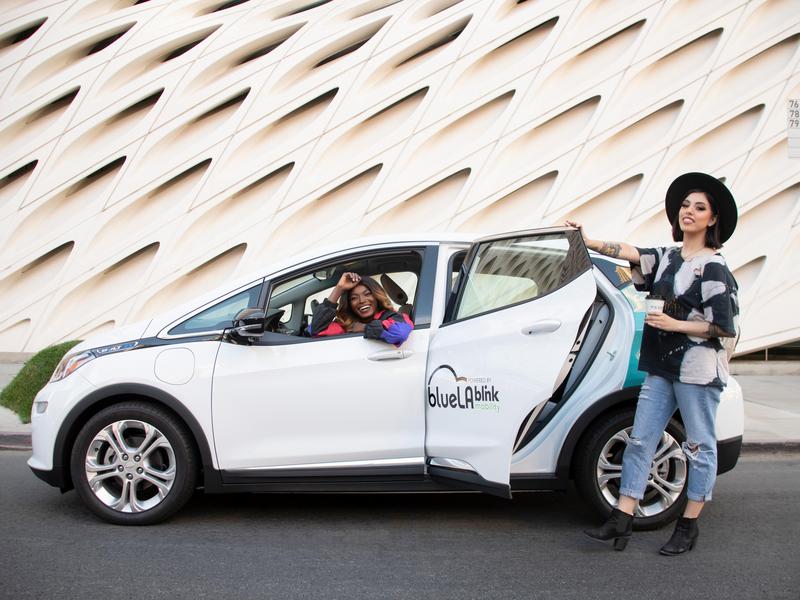Interested in joining a carsharing program for electric vehicles (EV’s)? Blink Mobility is a 100% electric car sharing service and part of the City of Los Angeles’s mobility solutions. Blink Mobility is available to anyone over 18 years of age with a valid driver’s license. Members have access to a network of shared electric vehicles 24-hours a day, seven days a week, at self-service locations throughout central Los Angeles.
EVs are growing in popularity every day mainly because they have no tailpipe emissions and are therefore easier on the environment. Despite the well-known environmental advantages of EVs, some still disagree with the environmental benefits or that simply instead focus on other aspects of vehicles. You may have even heard these opinions from family or friends. Below we bust the myths that say EVs aren’t that important to the environment!
- Myth: Batteries are worse for the environment than gas because they end up in landfills.
Truth: EV batteries are too valuable to be tossed into a landfill. Luckily, many materials and heavy metals can be reused. In Japan, Nissan battery contents are being reused in streetlights, while Renault batteries are backing up elevators in Paris. In Australia, Aceleron recycles batteries for electricity storage, solar energy storage, and electric bicycles. At GM in Michigan, old Chevy Volt battery contents power its data center. Used EV batteries are a treasure trove of reliable, long-lasting energy to be used in various ways.
- Myth: We shouldn’t be subsidizing EVs when we could just use caps on carbon and fossil fuels.
Truth: Every day, there are more cars on the road, and every one of those cars needs fuel. No carbon cap will ever prevent people from driving where they need to go, and it’s not going to do anything about all the pollution that gas-powered cars are causing right now. Switching to EVs removes the problem entirely by offering consumers a car that doesn’t use fossil fuels in the first place.
- Myth: Most power comes from coal, therefore using electricity to power EVs uses more fossil fuels than gas-fueled vehicles.
Truth: The cleaner the power source, the better, and each state is different. Iowa is the country’s most significant wind energy source, with giant turbines lining the landscape, making it an excellent place for those who want their energy to be as clean as possible. Meanwhile, West Virginia’s energy is almost entirely coal-fueled. When EVs are powered from the energy created by fossil fuels, they are not 100% clean; however, as Forbes reports, EVs are still better for the environment than internal combustion engine vehicles (ICEV), regardless of the source of power.
- Myth: More EVs means increasing the load on the power grid.
Truth: Electrification of our world is increasing pressure on the power grid, but EVs are not the villain. Blink uses local load management, also known as demand-side management (DSM), to manage electricity loads when many EVs are plugged in. When one EV is charging, the EV will receive the maximum output of nearly 20 kWh. When others connect, the load will be equally shared between them. The system automatically redistributes the output when one vehicle completes its charge, even if it’s still plugged into the station.
By joining Blink Mobility, you not only have a car when you need one, but you are also helping the environment and busting the myths that hold us back from being part of a greener world.
Recommend for You
Stay Informed
Join our mailing list for hot news and company updates.







